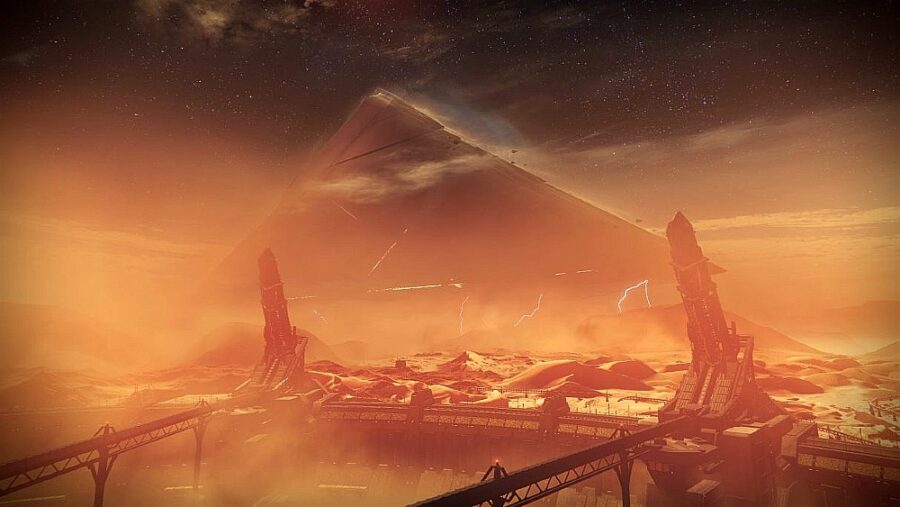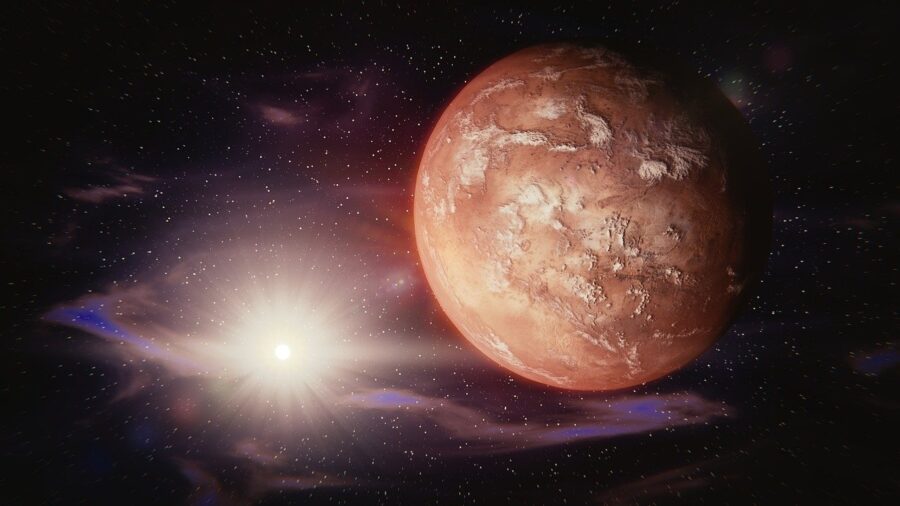Mars Reveals Strange Polygon Structures Under Surface

If you’re looking for inspiration for a sci-fi screenplay, pay attention: scientists have recently discovered bizarre polygon structures buried beneath the surface of Mars. Cutting-edge advancements in space tech facilitated the find, an extraordinary revelation from the cosmos.
It contributes a fascinating new chapter to our understanding of the Martian landscape and its history.
Zhurong delved beneath the surface of Mars to discover 16 fascinating polygonal structures.
The Chinese rover Zhurong made the discovery, which marks a significant milestone in China’s space exploration program. Indeed, Zhurong’s adventuring on Mars is part of the first Chinese mission to land on the Red Planet.
The Chinese rover was dropped off and deployed in Utopia Planitia, one of the Red Planet’s most significant impact basins. The impressive technology has been critical in revealing the mysterious, hidden structures in a particularly relevant section of the Martian landscape.

The impact crater in question was last traversed over forty years ago, in 1976, by NASA’s Viking 2. It’s a region of particular interest for scientists—be they Chinese or American.
Not only do these polygons lie approximately 35 meters underground, but they span out horizontally across nearly two kilometers.
Zhurong delved beneath the surface of Mars to discover 16 fascinating polygonal structures. Experts consider these formations to be the incredibly old consequence of a freeze-thaw cycle. The Martian terrain cracked after having previously frozen, a process observed on Earth in areas of permafrost.
However, according to scientists, the polygons emerging from this process on the Red Planet are enormous–much bigger than those encountered on Earth.
How did scientists come to their freeze-and-thaw hypothesis? By consulting data gathered from the rover’s sophisticated radar system. What it found is staggering: not only do these polygons lie approximately 35 meters underground, but they span out horizontally across nearly two kilometers.
Further research revealed fascinating details about Mars’ geological and climatic origins. Whereas volcanic activity shaped Earth’s polygonal structures—such as the famous Gaint’s Causeway in Northern Ireland—Martian polygons probably owe their extraordinary shapes to sedimentation and thermal processes, excluding the involvement of lava.
Hopefully, these fractures provide more clues to Mars’ climatic past and constitute points of comparison to the Utopia Planitia polygons.
Moreover, traces of ancient Martian floods along the Utopia Planitia—flooding dating to nearly three billion years ago—attest to a dynamic and varied Martian landscape undergoing revolutionary changes. Such an environment would have transformed Mars from a water-rich planet to the arid wasteland we witness today.
It would have also facilitated freeze and thaw processes, i.e., polygonal patterns.
While NASA’s Curiosity keeps on truckin,’ the Chinese Zhurong rover has since gone silent. This is presumably due to Mars’ harsh dust storms—although, of course, no one can rule out a sci-fi horror monster, either.
The former should soon be exploring terrain featuring enormous fractures visible from orbit.
Hopefully, these fractures provide more clues to Mars’ climatic past and constitute points of comparison to the Utopia Planitia polygons.
Further evidence also suggests Mars might have once also been subject to a much altered axial tilt or obliquity. Drastic changes in the planet’s tilt would have engendered extreme temperature fluctuations. Scientists propose the Red Plant tilted by up to forty degrees around five million years ago.
The pre-tilt planet would experience seasonal conditions vastly different from what we observe today.
In any case, the discovery enriches our understanding of Mars’ geological history and presents new avenues for exploring the planet’s past climate and atmospheric conditions.
Source: Nature Astronomy












